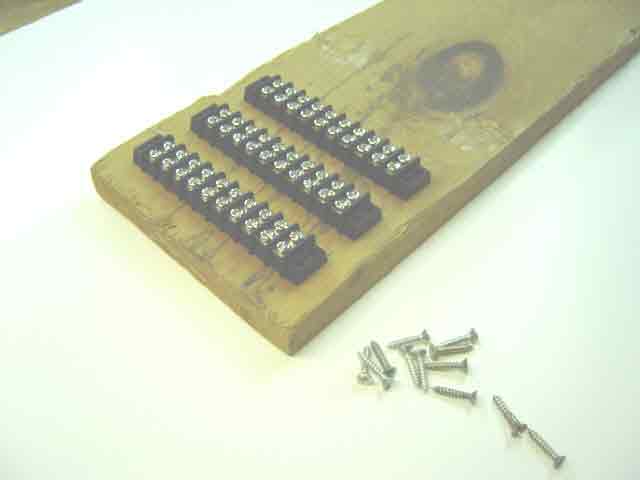The three terminal blocks (see picture) will be enough to wire 10 Hornby R8014 point motors. As we mentioned in Plate 167, additional terminal blocks must be provided for many other powered accessories in the layout, such as building lights, street lamps, yard lamps, even small electric motors to power moving accessories such as canal locks and dockside cranes.
--more--

There is an important difference, however, between a household service panel and our layout's power distribution center. A service panel is equipped with a circuit breaker for every branch wire, while our power distribution center will not use circuit breakers in the branch wires.
The reason that a household service panel requires breakers for the branch wires is that there is no way to predict how many devices ("loads") will be plugged into a particular wall outlet. If too many devices are drawing current from a single household outlet, the breaker for that outlet will trip to prevent an overload (overloads can start fires). The layout's power distribution center, however, does not require breakers. This is because every branch wire in the layout is permanently wired to exactly one particular device, such as a point motor. Therefore, the current carried by each branch wire is known in advance and remains fixed. In other words, every branch wire in the layout has a predetermined load.
The accompanying picture shows the three Miniatronics terminal blocks arranged upon an old wooden board. This board turns out to be "just the thing" for beginning the construction of a power distribution center, because it is long enough to provide plenty of room for additional terminal blocks.
Screws should not protrude
The 12 screws at the bottom of the picture were selected by the builder from his parts-bins. These screws are thin enough to fit through the mounting holes at the corners of the terminal blocks, and short enough to screw down the blocks without going all the way through the board. As we will see in subsequent plates, the bottom of the board should be smooth, without even the tips of screws sticking out.
Go to top of page